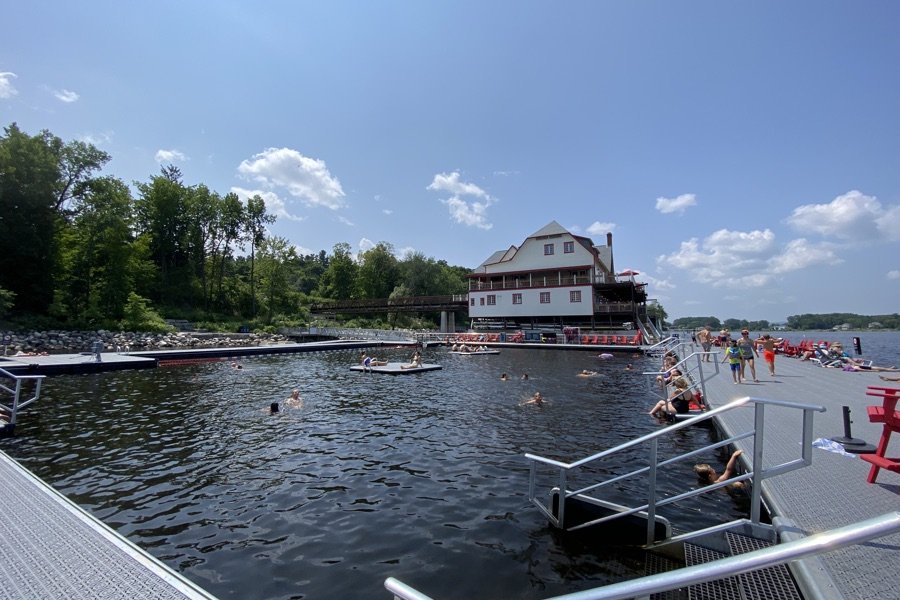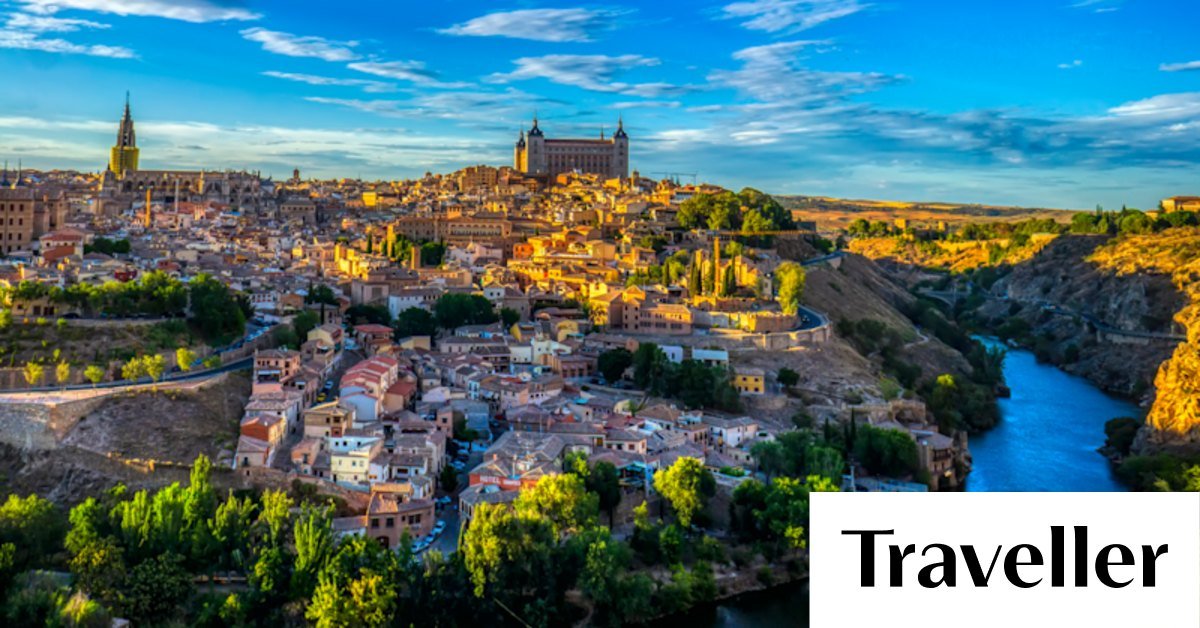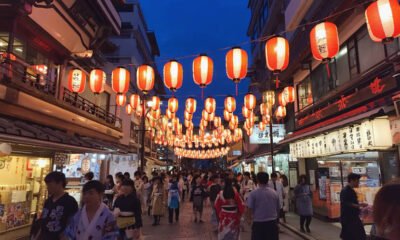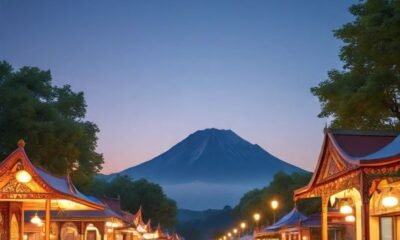Travel Journals
Reimagining the Future of Global Tourism A Deep Exploration of How Community-Driven, Sustainable Travel Experiences Are Redefining Visitor Engagement Across Lapland, Taiwan, Portugal, Thailand, Finland, and Italy Here’s What Travelers Need to Know

Tuesday, July 29, 2025
An academic study conducted at a university in Milan appeared to have explored new dimensions in the way tourism is understood and practiced globally. This research, titled “Designing Travel Experiences in Sustainable Tourism: Analysis and Comparison of International Case Studies,” was said to examine the intersection between tourism, sustainability, and the active role of communities through a concept called co-design.
Through the review of ten international case studies from countries such as Lapland, Portugal, Thailand, Finland, Italy, Taiwan, Spain, and Switzerland, the study reportedly revealed how participatory models of tourism are reshaping the sector. It seemed to suggest that this approach, centered on collaboration and community inclusion, has the potential to replace traditional tourism with something more equitable, authentic, and sustainable.
Reimagining Tourism as a Force of Regeneration
The core of this thesis appeared to advocate for the evolution of tourism into a space that goes beyond service consumption. The research appeared to propose that tourism should be viewed as a regenerative and collaborative activity where both visitors and locals play active roles in crafting experiences. Instead of relying on pre-designed packages, destinations were said to benefit more from flexible and locally tailored journeys.
By placing communities at the heart of the travel experience, the study seemed to suggest that tourism could not only enrich travelers’ understanding of local culture but also help revitalize traditions, preserve landscapes, and foster emotional and economic resilience. This model was described as a way to shift tourism from being exploitative to mutually beneficial.
Practical Applications for the Travel Industry
According to the research, the study could have practical consequences for those shaping the tourism industry today. For example, destination planners might find new frameworks for replacing outdated tourism systems with more inclusive, place-sensitive models. Hospitality professionals, it was implied, could also use these insights to better design experiences that are more engaging, culturally respectful, and environmentally responsible.
The researcher seemed to suggest that modern travelers are increasingly driven by a desire for connection, purpose, and authenticity, and are more likely to choose destinations that offer opportunities for meaningful engagement. This shift in traveler preference, according to the thesis, aligns perfectly with co-designed tourism.
- Co-designed models invite visitors to be participants, not just consumers.
- Local engagement helps strengthen cultural identity and regional pride.
Insights from Theory and Practice
One notable strength of the study appeared to lie in its ability to bridge academic theory with real-world examples. Using multimedia data, interviews, and field documentation, the research aimed to go beyond conceptual analysis and observe the actual impacts of participatory tourism.
Three central insights seemed to have emerged:
- Collaboration is essential: Destinations that involve both locals and travelers in co-creating tourism tend to offer more meaningful and sustainable experiences.
- Sustainability must be adaptive: Strategies should reflect the ecological, cultural, and social context of each destination.
- Technology should enhance connection: Tools like interactive media, augmented reality, or smart signposts can deepen visitor understanding, provided they are used to support, not replace, human interaction.
Local Communities as Designers
The thesis reportedly emphasized that the most resilient and successful tourism models were those shaped by the communities themselves. Rather than treating locals as passive service providers, the research suggested that they should be recognized as co-creators of travel experiences.
Several examples illustrated this concept:
In Portugal, a culinary initiative was said to have involved students and local partners to create a zero-waste food experience, showcasing regional recipes and reusing materials in its design.
In Apulia, located in Italy, a historic travel route along the Via Appia was reimagined by five municipalities through the use of community workshops and digital tools that connected historical knowledge with modern-day travelers.
In Sawankhalok, in Thailand, local stakeholders were believed to have worked together to create tourism activities linked to a UNESCO-recognized heritage site, promoting shared governance and cross-cultural learning.
These examples were said to illustrate that genuine involvement results in more resilient and context-specific tourism solutions.
Embedding Sustainability Through Design
One of the thesis’s significant conclusions appeared to be that design plays a vital role in embedding sustainability not just as an objective, but as a lived reality. Drawing from the definition of sustainable tourism that incorporates economic, social, and environmental dimensions, the study reviewed different tourism models including ecotourism, regenerative tourism, slow tourism, and solidarity tourism.
It was observed that across these models, sustainability came alive when integrated into narratives, touchpoints, and relationships between locals and guests. This way, destinations could become spaces where values are shared, stories are honored, and resources are respected.
The Role of Innovation: Phygital and Nature-Based Experiences
The study further highlighted how some initiatives combined technology with tradition to enhance visitor experiences. In Lapland, a storytelling journey known as the Mill Elf Journey was said to use QR codes, eye-tracking tools, and multimedia platforms to immerse travelers in regional folklore, creating a multi-sensory and intergenerational experience.
In Ceutì, a town in Spain, the implementation of solar-powered smart information points reportedly allowed locals to co-create digital heritage content, bringing the town’s cultural assets to life through a sustainable tech lens.
Meanwhile, Switzerland and Finland were cited as destinations that have invested in biophilic and nature-centered tourism. The Botel of the Lakes in Switzerland was said to offer tranquil floating accommodations off the grid, promoting mindful and reflective travel. On Elisaari Island in Finland, visitors reportedly participated in activities designed to foster personal growth, environmental connection, and emotional renewal.
These examples indicated that tech-forward and nature-based models can coexist and complement each other in delivering holistic tourism experiences.
Participatory Tourism Gains Global Traction
The comparative nature of the research seemed to show that participatory design in tourism is not limited to any one geography or culture. From UNESCO-listed towns to islands and protected parks, co-design appeared to deliver consistent benefits: it improved traveler satisfaction, supported local economies, and strengthened community resilience.
It was suggested that by enabling travelers to become active contributors, destinations could move away from tourism that consumes to tourism that co-creates and regenerates.
This shift was described as both urgent and inevitable in the face of mounting global challenges, including climate change, cultural erosion, and tourism fatigue. In this light, the thesis offered not just a study, but a potential blueprint for transformation.
Overall, the findings were framed as a call to reimagine tourism as a shared platform for learning, respect, and resilience. With proper implementation, this model could empower communities, elevate visitor experiences, and reshape the global travel landscape for the better.
Travel Journals
Road trip toys for 2 year olds cheap – emsnow.com
Travel Journals
Heads Up: New Ottawa airport bus, Munster farm dinner, river swimming, Quebec spas

484
This week’s Heads Up has the scoop on rental sports gear in the Outaouais, a farm-to-table dinner in Munster, a new bus to the Ottawa airport, a new restaurant in Kemptville, a bike ride near Eganville, açaí treats at St. Laurent Shopping Centre, day tripping to New Edinburgh and Rockcliffe, and more. Enjoy!
Cheese shop getting close to 100 percent Canadian stock
As you already know, I’m a big fan of supporting Canadian products—just check out my big guide to shopping locally. So a recent Facebook post by the Balderson Village Cheese Store, just outside Perth, caught my eye. The store’s owners have been making a concerted effort to stock 100 percent made-in-Canada foods. They’re about 75 percent of the way there and hope to have 100 percent Canadian stock by the end of the year. Well done!
You can rent scooters, pontoon boats and more in the Outaouais
Want to explore the great outdoors in the Outaouais, but you don’t have the gear? Tourisme Outaouais has this handy list of companies that rent out kayaks, paddleboards, canoes, electric bikes, scooters, pontoon boats and more.
OC Transpo to launch new bus to the airport
Perhaps finally realizing that folks travelling from Ottawa’s east end to Ottawa International Airport don’t much fancy taking three trains to reach their destination, OC Transpo is launching a direct bus service connecting the St. Laurent, Train and Hurdman stations to the airport. According to this CTV Ottawa story, Route 105 will launch on Sunday, August 24, and will run every half hour, 24 hours a day, seven days a week. The bus is anticipated to take 33 minutes to travel from St. Laurent to the airport.
Quebec loves its Nordic spas
Quebec seems to have embraced the Nordic spa concept—the circuit of hot tub or sauna, cold pool or shower, relaxation and repeat—more strongly than just about anywhere else in Canada. I’ve written a post about some of my favourite Quebec Nordic spas, and it barely scratches the surface. My friend Hilary Nangle recently wrote a post about her favourite Quebec Nordic spas and while there’s a bit of overlap between the two pieces, she’s discovered quite a few spots that I haven’t made it to … yet.
Science fiction, fantasy and horror book convention is coming to Kanata
I wanted to mention this event on the website last year, but by the time I heard about it, it had sold out! So if you’re a fan of Canadian science fiction, fantasy and horror novels, you might want to get your ticket to Can*Con now. You can meet authors, buy books, take classes, pitch your own book to agents and more. It’s happening at the Brookstreet Hotel in Kanata from October 17 to 19.
New restaurant opens in Kemptville
Named for a famous local Holstein bull, Goldwyn’s restaurant opened this past weekend at 25 Clothier Street East in downtown Kemptville. It promises diners “a modern take on the Wild West at our elevated country western saloon.” Sounds like fun!
You can take a staycation in New Edinburgh and Rockcliffe
Fancy staying close to home? I have just the suggestion: a day spent exploring New Edinburgh, Lindenlea and Rockcliffe. From the new(ish) NCC River House on the Ottawa River to a posh grocery store and a great place to pick up consignment designer clothes, you can read my day trip tips in the Ottawa Business Journal.
Saunders Farm Pig and Corn Roast tickets are available
Most years, the farm-to-table Pig and Corn Roast at Saunders Farm in Munster sells out. So if you want to go to this year’s event on Sunday, August 24, you might want to get your tickets now.
Scenic August bike ride will take cyclists along Eganville backroads
If you want to challenge yourself to a self-supported, non-racing bike ride through the hills and along the backroads near Eganville, now’s the time to register for this year’s Tour de Bonnechere on Sunday, August 24. You can choose from 50km, 65km and 100km routes, as well as a 20km family ride.
You can try a superfood at St. Laurent Shopping Centre
Perhaps açaí berries are old hat to you. I’d heard of them but hadn’t had a chance to taste the Brazilian “superfood” until I was invited to try it at Rio Açaí at St. Laurent Shopping Centre. (The owners also have a location at 35 allée de Hambourg in Gatineau.)
Açaí berries have become trendy in recent years for their health benefits. At Rio Açaí, you can try them in a bowl with your choice of other fruits (I picked mangoes, strawberries and blueberries). The consistency of puréed açaí is a bit like tapioca pudding and it isn’t super sweet, so it made a nice combo with the sweet, dense fruit. You can also try other Brazilian specialties at the takeout spot, such as warm cheese bread (it’s really good) and, of course, coffee.
(Disclosure: I received free products for review purposes. The shop did not review or approve this post. All opinions are my own.)
Looking for more tips on things to see and do in and around Ottawa? Subscribe to my free weekly newsletter or order a copy of my book, Ottawa Road Trips: Your 100-km Getaway Guide.
As the owner of Ottawa Road Trips, I acknowledge that I live on, work in and travel through the unceded, unsurrendered territory of the Algonquin Anishinaabeg Nation. I am grateful to have the opportunity to be present on this land. Ottawa Road Trips supports Water First, a non-profit organization that helps address water challenges in Indigenous communities in Canada through education, training and meaningful collaboration.
Travel Journals
Seven highlights of the former capital

Walk five minutes south of the monastery, past one former synagogue – Santa Maria La Blanca, reputed to be Europe’s oldest – and you arrive at another. The magnificent carved wooden ceilings and plasterwork walls of El Transito blend Mozarabic decorative influences. Constructed in 1355, El Transito houses the Sephardic Museum, which accounts for Toledo’s long Jewish history. You’ll find good information sheets in English and the museum has some especially beautiful ceramics. Pause afterwards in the synagogue’s small memorial garden. See spain.info
Take in the art at Hospital de Tavera
Patio in Hospital de Tavera museum.Credit: Alamy
Don’t like monuments and art? Better skip Toledo, which has them in spades. This Renaissance palace, built by a cardinal for the needy, is a whopper. The architectural highlight is the symmetrical double courtyards, while a wealth of paintings includes masterpieces by El Greco, Tintoretto and Zurbaran. Cardinal Tavera’s marble tomb is a sculptural work of art too, with no sign of humility other than a little memento mori skull tucked under his pillow. See fundacionmedinaceli.org
Admire El Greco paintings
Museum El Greco.Credit: iStock
Toledo is associated with El Greco, the 16th-century painter whose works seem astonishingly modern. You can see quite a few of his paintings in Toledo, and all are odd and electrifying. The church of Santo Domingo Monastery where the painter is buried has top examples including the altarpiece Assumption of the Virgin showing Mary springing from her tomb like a jack-in-the-box. El Greco Museum (in a house where El Greco never lived, despite claims) has several superb later works. See museodelgreco.sacatuentrada.es
Fill up at Confiteria Santo Tome
Santo Tome shop in Zocodover Square, Toledo.Credit: Alamy Stock Photo
If El Greco’s elongated, hollow-cheeked saints make you peckish, take a break from gloomy painted art and indulge in happy edible art instead. Toledo nuns are said to have invented marzipan – which is disputed – but Toledo has certainly produced it for centuries. Santo Tome, in business since 1856, is Spain’s best-known marzipan maker. You can devour biscuits, pastries, cakes, sweets and marzipan fruit filled with lip-licking goo. Like El Greco’s saints, you’ll soon be in heaven. See mazapan.com
Take a hike to Mirador del Valle
There are sweeping views of Toledo and the Tagus River from Mirador del Valle.Credit: iStock
Loading
In this old town of closed-in alleys, you’ll want to get beyond the walls to admire Toledo’s fabulous setting above the Tagus River, dominated by the whopping Alcazar, or fortress. This viewpoint is a 40-minute walk from Puente Nuevo bridge just below the fortress, but outlooks are fabulous all the way. Sunset and twilight are the most atmospheric. The lazy option is a taxi to nearby Parador de Toledo for a cocktail on the terrace. See paradores.es
The writer travelled at his own expense.
-

 Brand Stories2 weeks ago
Brand Stories2 weeks agoBloom Hotels: A Modern Vision of Hospitality Redefining Travel
-

 Brand Stories1 week ago
Brand Stories1 week agoCheQin.ai sets a new standard for hotel booking with its AI capabilities: empowering travellers to bargain, choose the best, and book with clarity.
-

 Destinations & Things To Do2 weeks ago
Destinations & Things To Do2 weeks agoUntouched Destinations: Stunning Hidden Gems You Must Visit
-

 Destinations & Things To Do1 week ago
Destinations & Things To Do1 week agoThis Hidden Beach in India Glows at Night-But Only in One Secret Season
-

 AI in Travel2 weeks ago
AI in Travel2 weeks agoAI Travel Revolution: Must-Have Guide to the Best Experience
-

 Brand Stories1 month ago
Brand Stories1 month agoVoice AI Startup ElevenLabs Plans to Add Hubs Around the World
-

 Brand Stories3 weeks ago
Brand Stories3 weeks agoHow Elon Musk’s rogue Grok chatbot became a cautionary AI tale
-

 Asia Travel Pulse1 month ago
Asia Travel Pulse1 month agoLooking For Adventure In Asia? Here Are 7 Epic Destinations You Need To Experience At Least Once – Zee News
-

 AI in Travel1 month ago
AI in Travel1 month ago‘Will AI take my job?’ A trip to a Beijing fortune-telling bar to see what lies ahead | China
-

 Brand Stories2 weeks ago
Brand Stories2 weeks agoContactless Hospitality: Why Remote Management Technology Is Key to Seamless Guest Experiences














You must be logged in to post a comment Login